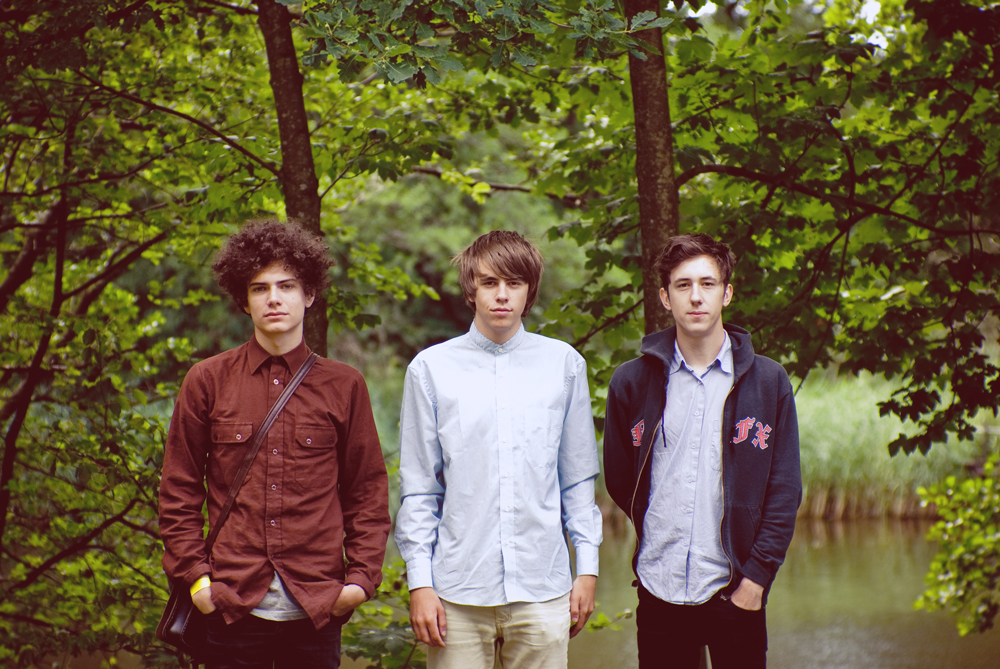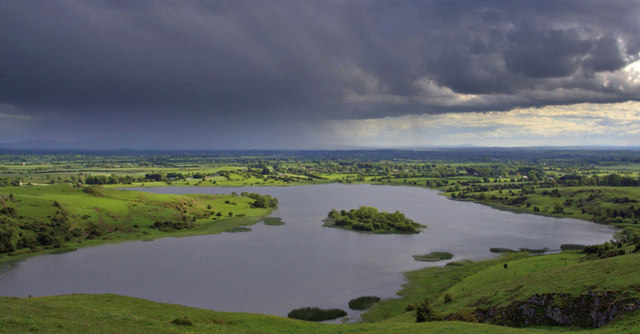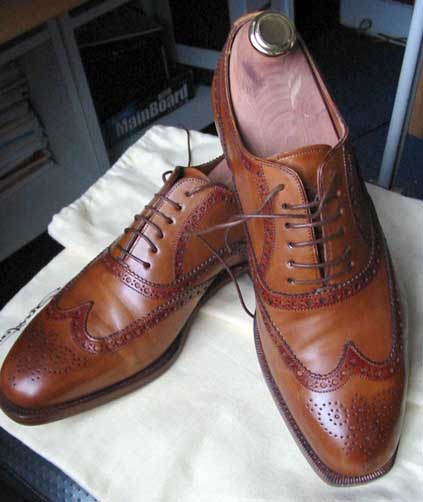|
Grandfather Shirt
A grandfather shirt or grandad shirt is a long-sleeved or short-sleeved flannel or brushed cotton band collared shirt worn throughout Ireland. Traditional shirts are white with coloured vertical stripes. Longer shirts are used as nightshirts or pajamas. The nightshirt version can include a matching nightcap. The style of shirt (called a ''union shirt'') was also worn by working-class men in the United Kingdom during the industrial era. At this period, the lack of a turndown or collar "cape" was filled by the use of a detachable collar. The 2010s decade has also seen the garment feature as a mainstream fashion item for men. The grandfather shirt is also made of Irish linen. The linen version is colloquially known as a 'Sunday shirt'. Sunday shirts are often paired with black trousers or Irish tweed pants and worn to mass, christenings, funerals, and weddings. In popular culture, a variety of traditional Irish clothing was featured on the BBC series ''Ballykissangel'' and th ... [...More Info...] [...Related Items...] OR: [Wikipedia] [Google] [Baidu] |
Weddings
A wedding is a ceremony where two people are united in marriage. Wedding traditions and customs vary greatly between cultures, ethnic groups, religions, countries, and social classes. Most wedding ceremonies involve an exchange of marriage vows by a couple, presentation of a gift (offering, rings, symbolic item, flowers, money, dress), and a public proclamation of marriage by an authority figure or celebrant. Special wedding garments are often worn, and the ceremony is sometimes followed by a wedding reception. Music, poetry, prayers, or readings from religious texts or literature are also commonly incorporated into the ceremony, as well as superstitious customs. Common elements across cultures Some cultures have adopted the traditional Western custom of the white wedding, in which a bride wears a white wedding dress and veil. This tradition was popularized through the marriage of Queen Victoria. Some say Victoria's choice of a white gown may have simply been a sign ... [...More Info...] [...Related Items...] OR: [Wikipedia] [Google] [Baidu] |
Irish Culture
The culture of Ireland includes language, literature, music, art, folklore, cuisine, and sport associated with Ireland and the Irish people. For most of its recorded history, Irish culture has been primarily Gaelic (see Gaelic Ireland). It has also been influenced by Anglo-Norman, English and Scottish culture. The Anglo-Normans invaded Ireland in the 12th century, and the 16th/17th century conquest and colonisation of Ireland saw the emergence of Tudor English culture repurposed in an Irish style. The Plantation of Ulster also introduced Scottish elements mostly confined to Northern Ireland. Today, there are often notable cultural differences between those of Catholic and Protestant (especially Ulster Protestant) background, and between travellers and the settlers population. Due to large-scale emigration from Ireland, Irish culture has a global reach and festivals such as Saint Patrick's Day and Halloween are celebrated all over the world. Irish culture has to some degree be ... [...More Info...] [...Related Items...] OR: [Wikipedia] [Google] [Baidu] |
National Costume
A folk costume (also regional costume, national costume, traditional garment, or traditional regalia) expresses an identity through costume, which is usually associated with a geographic area or a period of time in history. It can also indicate social, marital or religious status. If the costume is used to represent the culture or identity of a specific ethnic group, it is usually known as ethnic costume (also ethnic dress, ethnic wear, ethnic clothing, traditional ethnic wear or traditional ethnic garment). Such costumes often come in two forms: one for everyday occasions, the other for traditional festivals and formal wear. Following the rise of romantic nationalism, the pre-industrial peasantry of Europe came to serve as models for all that appeared genuine and desirable. Their dresses are crystallized into so-called "typical" forms, and enthusiasts adopted that attire as part of their symbolism. In areas where Western dress codes have become usual, traditional garment ... [...More Info...] [...Related Items...] OR: [Wikipedia] [Google] [Baidu] |
Brogues
The brogue (derived from the Gaeilge (Irish), and the Gaelic ( Scottish) for "shoe") is a style of low-heeled shoe or boot traditionally characterised by multiple-piece, sturdy leather uppers with decorative perforations (or "broguing") and serration along the pieces' visible edges. Brogues were traditionally considered to be outdoor or country footwear as the perforations were originally intended to allow the upper to dry more quickly in wet climates. As such they were otherwise considered not appropriate for casual or business occasions, but brogues are now considered appropriate in most contexts. Brogues are most commonly found in one of four toe cap styles (full or "wingtip", semi-, quarter and longwing) and four closure styles (Oxford, Derby, ghillie, and monk). Today, as well as their typical form of sturdy leather shoes or boots, brogues may take the form of business dress shoes, sneakers, high-heeled women's shoes, or any other shoe form that utilises or evokes the m ... [...More Info...] [...Related Items...] OR: [Wikipedia] [Google] [Baidu] |
Flat Cap
A flat cap is a rounded cap with a small stiff brim in front, originating in Britain and Ireland. The hat is known in Ireland as a paddy cap; in Scotland as a bunnet; in Wales as a Dai cap; and in the United States as an English cap, Irish cap, or flat cap. Various other terms exist (cabbie cap, driver cap, longshoreman cap, ivy cap, train engineer cap,etc.). Cloths used to make the cap include wool, tweed (most common), and cotton. Less common materials may include leather, linen, or corduroy. The inside of the cap is commonly lined for comfort and warmth. History The style can be traced back to the 14th century in Northern England, when it was more likely to be called a " bonnet". This term was replaced by "cap" before about 1700, except in Scotland, where it continues to be referred to as a ''bunnet'' in Scots. A 1571 Act of the English Parliament was enacted to stimulate domestic wool consumption and general trade. It decreed that on Sundays and holidays, all males o ... [...More Info...] [...Related Items...] OR: [Wikipedia] [Google] [Baidu] |
Aran Jumper
The Aran jumper (Irish: ''Geansaí Árann'') is a style of jumper that takes its name from the Aran Islands off the west coast of Ireland. A traditional Aran Jumper usually is off-white in colour, with cable patterns on the body and sleeves. Originally the jumpers were knitted using unscoured wool that retained its natural oils ( lanolin) which made the garments water-resistant and meant they remained wearable even when wet. Use of the word jumper (or other options such as " pullover" and "jersey") is largely determined by the regional version of English used. In the case of Ireland, Britain and Australia, "jumper" is the standard word, “jersey” is used in South Africa whereas "sweater" is mainly found in tourist shops and in North America. The word used in Irish is '' geansaí'' ("guernsey"). Characteristics Traditionally, an Aran jumper is made from undyed cream-coloured '' báinín'' (pronounced "bawneen"), a yarn made from sheep's wool, sometimes "black-sheep" wool. Th ... [...More Info...] [...Related Items...] OR: [Wikipedia] [Google] [Baidu] |
Henley Shirt
A Henley shirt is a collarless pullover shirt, characterized by a round neckline and a placket about long and usually having 2–5 buttons. It essentially is a collarless polo shirt. The sleeves may be either short or long, and it can be made in almost any fabric, although cotton, cotton-polyester blends, and thermals are by far the most popular. Henley shirts are generally regarded as menswear, but women's versions have appeared as business casual and casual wear as well. History Henley shirts were named because they were the traditional uniform of rowers in the English town of Henley-on-Thames. The first Henley Royal Regatta was in 1839. In his biography of Ralph Lauren Ralph Lauren, ( ; ; born October 14, 1939) is an American fashion designer, philanthropist, and billionaire businessman, best known for the Ralph Lauren Corporation, a global multibillion-dollar enterprise. He has become well known for his co ..., the journalist Michael Gross quotes a New York merch ... [...More Info...] [...Related Items...] OR: [Wikipedia] [Google] [Baidu] |
Embroidery
Embroidery is the craft of decorating fabric or other materials using a needle to apply thread or yarn. Embroidery may also incorporate other materials such as pearls, beads, quills, and sequins. In modern days, embroidery is usually seen on caps, hats, coats, overlays, blankets, dress shirts, denim, dresses, stockings, scarfs, and golf shirts. Embroidery is available in a wide variety of thread or yarn colour. Some of the basic techniques or stitches of the earliest embroidery are chain stitch, buttonhole or blanket stitch, running stitch, satin stitch, and cross stitch. Those stitches remain the fundamental techniques of hand embroidery today. History Origins The process used to tailor, patch, mend and reinforce cloth fostered the development of sewing techniques, and the decorative possibilities of sewing led to the art of embroidery. Indeed, the remarkable stability of basic embroidery stitches has been noted: The art of embroidery has been found worldw ... [...More Info...] [...Related Items...] OR: [Wikipedia] [Google] [Baidu] |
South Asia
South Asia is the southern subregion of Asia, which is defined in both geographical and ethno-cultural terms. The region consists of the countries of Afghanistan, Bangladesh, Bhutan, India, Maldives, Nepal, Pakistan, and Sri Lanka.;;;;;;;; Topographically, it is dominated by the Indian subcontinent and defined largely by the Indian Ocean on the south, and the Himalayas, Karakoram, and Pamir mountains on the north. The Amu Darya, which rises north of the Hindu Kush, forms part of the northwestern border. On land (clockwise), South Asia is bounded by Western Asia, Central Asia, East Asia, and Southeast Asia. The South Asian Association for Regional Cooperation (SAARC) is an economic cooperation organization in the region which was established in 1985 and includes all eight nations comprising South Asia. South Asia covers about , which is 11.71% of the Asian continent or 3.5% of the world's land surface area. The population of South Asia is about 1.9 billion or a ... [...More Info...] [...Related Items...] OR: [Wikipedia] [Google] [Baidu] |
Islam
Islam (; ar, ۘالِإسلَام, , ) is an Abrahamic monotheistic religion centred primarily around the Quran, a religious text considered by Muslims to be the direct word of God (or '' Allah'') as it was revealed to Muhammad, the main and final Islamic prophet.Peters, F. E. 2009. "Allāh." In , edited by J. L. Esposito. Oxford: Oxford University Press. . (See alsoquick reference) " e Muslims' understanding of Allāh is based...on the Qurʿān's public witness. Allāh is Unique, the Creator, Sovereign, and Judge of mankind. It is Allāh who directs the universe through his direct action on nature and who has guided human history through his prophets, Abraham, with whom he made his covenant, Moses/Moosa, Jesus/Eesa, and Muḥammad, through all of whom he founded his chosen communities, the 'Peoples of the Book.'" It is the world's second-largest religion behind Christianity, with its followers ranging between 1-1.8 billion globally, or around a quarter of the world's ... [...More Info...] [...Related Items...] OR: [Wikipedia] [Google] [Baidu] |
Kurta
A ''kurta'' is a loose collarless shirt or tunic worn in many regions of South Asia, (subscription required) Quote: "A loose shirt or tunic worn by men and women." Quote: "Kurta: a loose shirt without a collar, worn by women and men from South Asia" and now also worn around the world. Quote: "The kurta—the tunic—is likewise variable in its cut. It might be wide or tight, there is variety in the length and width of the sleeves, the height of the slits on either side, and especially the shape of the neck. The length of the tunic varies as well, ranging from upper-thigh to well below the knee. Like most garments of this type, worn by people in many countries in South Asia, the Middle East, and North Africa, the tunic always covers the crotch area of both genders." Tracing its roots to Central Asian nomadic tunics, or upper body garments, of the late-ancient- or early-medieval era, the kurta has evolved stylistically over the centuries, especially in South Asia, as a garment for ... [...More Info...] [...Related Items...] OR: [Wikipedia] [Google] [Baidu] |







.jpg)
